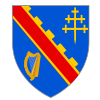
The Royal Observatory, Greenwich is an observatory situated on a hill in Greenwich Park in south east London, overlooking the River Thames to the north. It played a major role in the history of astronomy and navigation, and because the Prime Meridian passed through it, it gave its name to Greenwich Mean Time, the precursor to today's Coordinated Universal Time (UTC). The ROG has the IAU observatory code of 000, the first in the list. ROG, the National Maritime Museum, the Queen's House and the clipper ship Cutty Sark are collectively designated Royal Museums Greenwich.
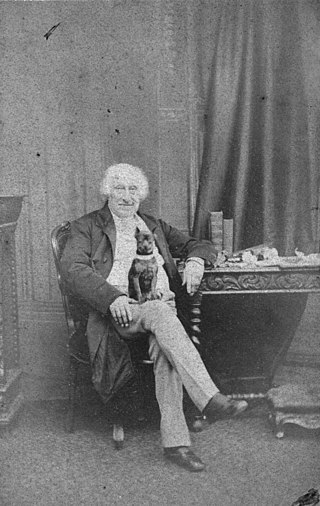
Sir James South FRS FRSE PRAS FLS LLD was a British astronomer.
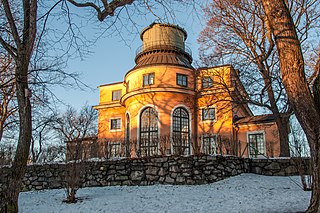
The Stockholm Observatory is an astronomical observatory and institution in Stockholm, Sweden, founded in the 18th century and today part of Stockholm University. In 1931, the new Stockholm Observatory, nicknamed "Saltis", was inaugurated on the Karlsbaderberget at Saltsjöbaden, near Stockholm, and operated until 2001.

Markree Observatory was an astronomical observatory in County Sligo, Ireland. The asteroid 9 Metis was discovered from this observatory in 1848 by Cooper's assistant Andrew Graham using a comet seeker telescope. The observatory was also home to the largest refractor of the early 1830s, which had a 13.3-inch (340 mm) aperture Cauchoix of Paris lens; the largest in the world at that time. The observatory also housed a number of instruments and was operated to varying degrees throughout the 19th century.

Space Place at Carter Observatory is an observatory in Wellington, New Zealand, located at the top of the Wellington Botanic Garden.

Štefánik's Observatory is an astronomical observatory on Petřín hill in the center of Prague founded 1928 and named after Slovak astronomer Milan Rastislav Štefánik. Nowadays the observatory specializes above all in popularization of astronomy and related natural sciences.

The Brera Observatory is an astronomical observatory in the Brera district of Milan, Italy. It was built in the historic Palazzo Brera in 1764 by the Jesuit astronomer Roger Boscovich. Following the suppression of the Jesuits by Clement XIV on 21 July 1773, the palace and the observatory passed to the then rulers of northern Italy, the Austrian Habsburg dynasty.
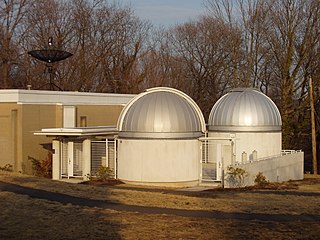
The Yale University Observatory, also known as the Leitner Family Observatory and Planetarium, is an astronomical observatory owned and operated by Yale University, and maintained for student use. It is located in Farnham Memorial Gardens near the corner of Edwards and Prospect Streets, New Haven, Connecticut.

The Royal Observatory of Belgium, has been situated in the Uccle municipality of Brussels, Belgium, since 1890. It was first established in Saint-Josse-ten-Noode in 1826 by King William I of the Netherlands under the impulse of Adolphe Quetelet. It was home to a 100 cm (39 in) diameter aperture Zeiss reflector in the first half of the 20th century, one of the largest telescopes in the world at the time. It now owns a variety of other astronomical instruments, such as astrographs, as well as a range of seismograph equipment.

Grubb Parsons was a historic manufacturer of telescopes, active in the 19th and 20th centuries. They built numerous large research telescopes, including several that were the largest in the world of their type.

The Norman Lockyer Observatory, the Lockyer Technology Centre, and the Planetarium, is a public access optical observatory 1 mile (1.6 km) east of Sidmouth, East Devon in South West England. It houses a number of historical optical telescopes, including the Lockyer Telescope, and is operated by Norman Lockyer Observatory Society (NLOS).

Mills Observatory is the first purpose-built public astronomical observatory in the UK, located in Dundee, Scotland. Built in 1935, the observatory is classically styled in sandstone and has a distinctive 7 m dome, which houses a Victorian refracting telescope, a small planetarium, and display areas. The dome is one of two made from papier-mâché to survive in the UK, the other being at the Godlee Observatory.

Coats Observatory is Scotland's oldest public observatory. It is currently closed for refurbishment as part of a 4-year long £42m transformation of the observatory and museum buildings. Located in Oakshaw Street West, Paisley, Renfrewshire, the observatory has been operational since 1 October 1883 and continues to function to this day, offering visitors the opportunity to view the night sky through the powerful telescopes housed within the building. The observatory is currently closed for redevelopment and is due to reopen in 2023.

Fuertes Observatory is an astronomical observatory located on the North Campus of Cornell University in Ithaca, New York. The observatory was designed by L.P. Burnham, Cornell Professor of Architecture and completed in fall of 1917. It was originally used by the Civil Engineering Department as an instructional field office for navigation and surveying. Today, the observatory is primarily used for public outreach, welcoming over two thousand visitors per year with open houses on clear Friday nights.
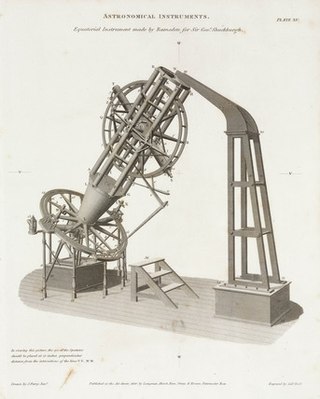
The Shuckburgh telescope or Shuckburgh equatorial refracting telescope was a 4.1 inches (10.4 cm) diameter aperture telescope on an equatorial mount completed in 1791 for Sir George Shuckburgh (1751–1804) in Warwickshire, England, and built by British instrument maker Jesse Ramsden (1735–1800). It was transferred to the Royal Observatory, Greenwich in 1811 and the London Science Museum in 1929. Even though it has sometimes not been regarded as particularly successful, its design was influential. It was one of the larger achromatic doublet telescopes at the time, and one of the largest to have an equatorial mount. It was also known as the eastern equatorial for its location.
James Archibald Hamilton (1748–1815) FRIA, Irish cleric and astronomer, was born in the area of Athlone, County Westmeath, Ireland.

The Greenwich 28-inch refractor is a telescope at the Royal Observatory, Greenwich, where it was first installed in 1893. It is a 28-inch ( 71 cm) aperture objective lens telescope, otherwise known as a refractor, and was made by the telescope maker Sir Howard Grubb. The achromatic lens was made Grubb from Chance Brothers glass. The mounting is older however and dates to the 1850s, having been designed by Royal Observatory director George Airy and the firm Ransomes and Simms. The telescope is noted for its spherical dome which extends beyond the tower, nicknamed the "onion" dome. Another name for this telescope is "The Great Equatorial" which it shares with the building, which housed an older but smaller telescope previously.
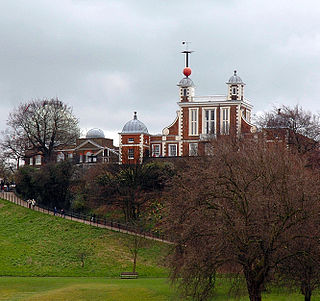
The Sheepshanks Equatorial Telescope was a 6.7-inch (170 mm) aperture refracting telescope installed in 1838 at the Royal Observatory in Greenwich. The telescope was donated to the observatory by the astronomer Richard Sheepshanks. The telescope had a doublet objective lens made by Cauchoix of Paris. Originally it was mounted on a clockwork driven equatorial mounting by the Grubb Telescope Company on a stone pillar.



















